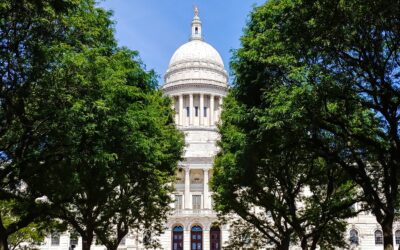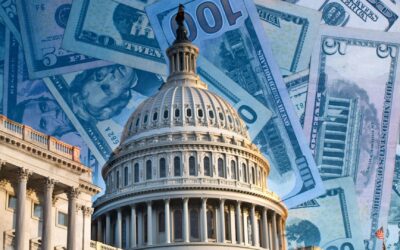Government meeting agendas and minutes are often seen as insufficient, and for good reason. Meeting agendas and minutes fail to capture the full scope of the discussion, and they’re often inaccurate. That’s why, in this blog post, we’re going to explore why agendas and minutes are not an effective way to monitor government meetings. We’ll discuss how meeting video recordings are a better alternative, and we’ll give you tips on how to make the most of recordings with Cloverleaf AI. By the end of this post, you’ll have everything you need to monitor government meetings at scale.
1. Meeting Agendas Don’t Include Every Topic Discussed During The Meeting.
Meeting agendas can be a helpful tool when planning a meeting, but they should not be the only source of information. Often, meeting agendas are created months in advance and can become irrelevant by the time the meeting actually takes place. Agenda items don’t reflect what was actually discussed during the meeting, but rather what was planned to be discussed.
Another issue with meeting agendas is that they’re often created by people who aren’t active participants in the meeting itself. This means that agenda items may not accurately represent concerns or ideas raised by other members of the team. Instead, these items may be based on assumptions or personal opinions rather than what was actually discussed. Consequently, it’s important to keep track of what is being said during a meeting so that you can create an accurate agenda for future meetings.
Finally, it’s important to remember that agendas can’t anticipate topics that arise during a government meeting that weren’t planned. These types of discussions happen in almost every meeting, especially ones that include an open session where constituents voice their concerns or opinions.
2. Meeting Minutes Are Often Inaccurate And Don’t Capture The Nuances Of The Discussion.
Many government affairs professionals have conceded to relying on meeting minutes as the primary way of monitoring meetings. After all, the minutes detail what was discussed in the meeting, right? Not exactly. Meeting minutes are often inaccurate because they are recorded manually and often after the discussion takes place. This means that important details – such as who said what – can be missed. Additionally, agenda items that were not included on the agenda can be included in minutes without anyone knowing. This can lead to biased information being included in minutes, as those who recorded them may have had a vested interest in the outcome of the meeting.
Additionally, minutes often only include what was decided on during the meeting – not what was discussed. This can leave out important details that were relevant to the discussion at hand. Plus, if someone wants to review minutes from a past meeting but doesn’t have an agenda or minute sheet available, they may be left wondering what happened in the meeting! Minutes can take a long time to become available because they have to be recorded manually and often by multiple people. This means that sometimes important discussions or decisions don’t get captured until days or weeks later!
3. Video Recordings Of Meetings Are A Better Alternative.
Agendas and minutes are common records of meetings, but they’re not always enough. With video recordings, you can get a more accurate picture of what happened in a meeting by capturing all the details. These recordings are much more common in the post-covid era when people are more likely to record meetings and publish them for the public.
With video recordings you don’t have to wait until after the meeting to understand what took place – you can often access it right away! Additionally, video recordings often come with a live stream so that everyone in attendance can see it at the same time. This makes it easier for people to discuss and debate issues during the meeting, which is beneficial for open communication.
How To Leverage Video Recordings Of Government Meetings
The only potential downside to relying on videos of meetings instead of minutes and agendas is that they are often very long and decentralized. A government meeting can last anywhere from 30 mins to 8 hours depending on the topics covered. With Cloverleaf AI you don’t have to sit through government meetings to understand them. Simply search through our database of meeting videos with keywords of your choice and instantly watch the clips of the meetings that included your keywords.
To learn more about Cloverleaf AI click here to schedule a demo!







